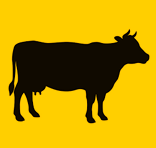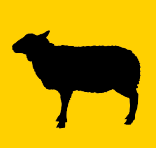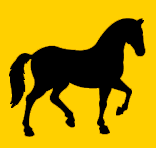Case study #01
 |
 |
 |
 |
In a nursery farm, the following clinical signs were observed in about 15% of the animals in a batch with 10-week-old pigs: lethargy, anorexia, and, in some cases, elevated rectal temperature measurements (40, 5-41.5°C). Respiratory signs (cough and dyspnea) and cyanosis in legs, abdomen and ears were also observed in several animals, and digestive signs (diarrhea) were also observed in a small proportion of pigs. Approximately one third of the animals with clinical signs died as a result of the disease.

Image 1: Swine farm in transition (source: VISAVET-UCM).

Image 2: Animal with cyanosis (source: Álvaro Aguarón, SYVA).
The post-mortem examination of the animals revealed the presence of several anomalies, including:
- Hepatomegaly and splenomegaly.
- Generalized edema.
- Extravasation of fluids.
- Cardiac hemorrhage.
- Lymph node enlargement,
Furthermore, histopathological analysis of several samples revealed the following findings:
- Diffuse interstitial pneumonia.
- Multifocal to diffuse hepatitis with the presence of an inflammatory infiltrate, in some cases forming small dense aggregates, between the hepatic sinusoids and in periportal areas.

Image 3: Hepatomegaly and splenomegaly (source: Álvaro Aguarón, SYVA).

Image 4: Generalized edema (source: Álvaro Aguarón, SYVA).

Image 5: Fluid extravasation (source: Álvaro Aguarón, SYVA).

Image 6: Cardiac hemorrhage (source: Álvaro Aguarón, SYVA).

Image 7: Enlarged lymph nodes (source: Álvaro Aguarón, SYVA).

Image 8: Left, lung image (diffuse interstitial pneumonia); right, Liver image (multifocal to diffuse hepatitis) (source: Álvaro Aguarón (SYVA)).

Image 9: hepatitis with “presence of an inflammatory infiltrate, in some cases forming small dense aggregates, between the hepatic sinusoids and in periportal areas”.
Fuente: Álvaro Aguarón (SYVA).
In view of the septicemia observed in the affected pigs, a bacterial pathogen is suspected. The following pathogens are considered in the differential diagnosis:
- Streptococcus suis
- Salmonella enterica
- Erysipelothrix rhusiopathiae
- Escherichia coli
- Pasteurella multocida
After bacteriological culture, a Gram-negative, lactose-negative bacillus was identified, which grew in the following selective media:
- Xylose Lysine Deoxycholate Agar (XLD)
- Modified Rappaport Vassiliadis Semisolid Medium (MSRV)
Serotyping using specific polysera was also performed, yielding the following antigenic formula: 6.7:c:1.5. It was also confirmed through biochemical tests that the bacterium was negative to the mucato and dulcitol tests.
What could be the pathogen behind this outbreak?

Image 10: Modified semisolid medium Rappaport Vassiliadis (MSRV) image (source: VISAVET-UCM).

Image 11: Xylose Lysine Deoxycholate (XLD) agar médium image (source: VISAVET-UCM).

Image 12: Image of the serological tests applied to the isolate obtained after which the antigenic formula could be confirmed (source: VISAVET-UCM).
Solution
 |
The isolated pathogen was Salmonella enterica subsp. enterica serotype Choleraesuis.
Cases of salmonellosis due to Salmonella Choleraesuis usually affect young animals after weaning (up to five months of age) and like many other diseases in this phase they can be associated with stress (due to weaning and grouping of animals, presence of immunosuppressants viruses and lower levels of antibodies received from the mother). Although the frequency of appearance of this pathogen in pigs in Europe is low, it is more common in other regions (North America and Asia), causing important outbreaks like the one in this example, with a morbidity of 10% and a fatality rate of 33%. These figures imply significant economic losses on a farm due to the high associated mortality as well as the decrease in the productive levels of the affected animals.
The route of entry of this pathogen into a farm is similar to that of other Salmonella serovars, and can be through asymptomatic carrier animals, food or wild animals (specially wild boars in the case of free-range Iberian pigs). Despite its relatively low incidence in pigs in Europe, an increase in its distribution has been described in wild boar populations in this region, and the bacterium has been detected both in apparently healthy animals and in individuals with signs of septicemic infections similar to those observed in pigs. Wild boars can, therefore, be a source of infection for both pig farms (especially extensive ones) and people.
Salmonella Choleraesuis, like many other Salmonella serovars, can cause clinical disease in humans. Compared to other serovars such as Enteritidis and Typhimurium, the incidence of cases in people due to S. Choleraesuis is much lower, but when they occur their severity is usually particularly high, frequently causing (in more than half of the cases according to some estimates) invasive infections that require the use of antibiotics for treatment. The increasing description of S. Choleraesuis strains resistant to several of these antibiotics further increases the zoonotic importance of this serovar in recent years.

Image 13: Wild boars can be a source of infection for both swine farms (extensive especially) and human (source: VACDIVA-UCM).










